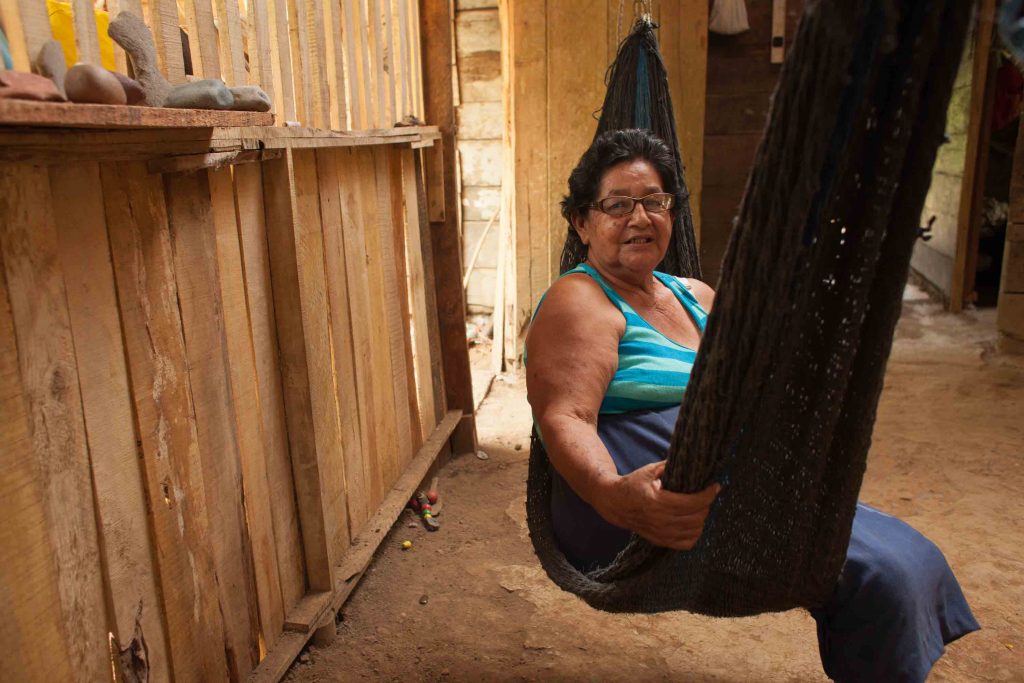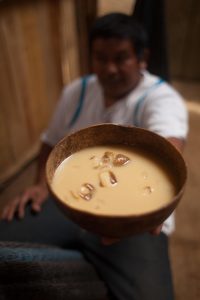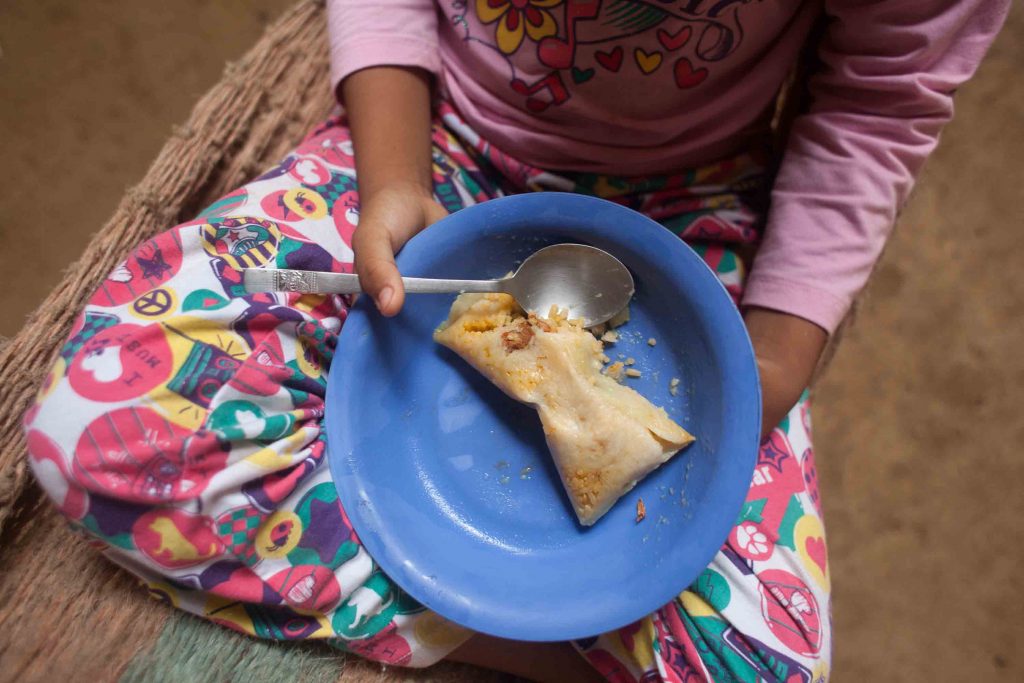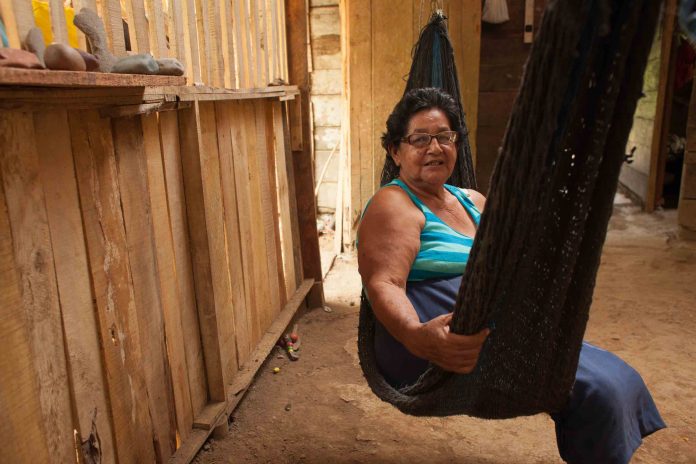On the other side of the Rio Grande de Térraba, where there is no inter-American street or electricity, lives Celedina Maroto Leiva, a 66-year-old woman who describes herself as “one of the mere indigenous Boruca Indians,” and an advocate of her traditions and traditional food.

With the same pride with which Celedina declares her roots, she protects them. For years she worked as the teacher of the Boruca language in three schools within the indigenous territory, and today she is one of the few people who remembers speaking it as a child as a first language.
But the defense of the Boruca tradition in Celedina’s house goes beyond protecting the language, it is also about pampering it.
“I only drink the chicha that my mother makes,” said Norma Mora Maroto, Celedina’s daughter. That day we crossed the Grande de Térraba river together in a panga to taste the traditional Boruca cuisine that Celedina prepares.
Chicha is a corn-based drink that belongs to the tradition of many ethnic groups in Central and South America. Celedina explains that in the Boruca culture, traditional chicha is considered a food drink that is prepared for the holidays, and that both children and adults can consume. But she knows that for all those who do not know the history, chicha is a drink to get drunk.

There are two types of chicha, the chicha from corn born, which in Boruca is called Tuijcha, and the chicha de “motete,” or Mu¨nsrá. What is the difference? The chicha de maize born is drunk fresh and unfermented, while the chicha de “motete” is a fermented drink, so it has alcohol.
The chicha de maize born only has two ingredients, corn and tapa de dulce, but it takes five days to prepare, which begins with soaking the corn in water for a full day. After that time, the corn dries well and is left to rest for four days so that it begins to germinate. When the corn is “born” it is ground, strained and cooked as if it were an atoll. To finish, add a sweet lid and, if the atol is very thick, water.
Chicha de “motet” can be prepared in a couple of days, but the process is more complex and requires a special corn-based yeast that is prepared in advance. The first step is to grind the corn and let it soak for a day. The next day, the corn is ground again to make a dough that is then packed in bijagua leaves (Calathea lutea). Celedina adds a banana to the package to improve its flavor. These packages are cooked in boiling water for an hour.There are two types of chicha, the chicha from corn born, which in Boruca is called Tuijcha, and the chicha de “motete,” or Mu¨nsrá. What is the difference? The chicha de maize born is drunk fresh and unfermented, while the chicha de “motete” is a fermented drink, so it has alcohol.
The chicha de maize born only has two ingredients, corn and tapa de dulce, but it takes five days to prepare, which begins with soaking the corn in water for a full day. After that time, the corn dries well and is left to rest for four days so that it begins to germinate. When the corn is “born” it is ground, strained and cooked as if it were an atoll. To finish, add a sweet lid and, if the atol is very thick, water.
Chicha de “motet” can be prepared in a couple of days, but the process is more complex and requires a special corn-based yeast that is prepared in advance. The first step is to grind the corn and let it soak for a day. The next day, the corn is ground again to make a dough that is then packed in bijagua leaves (Calathea lutea). Celedina adds a banana to the package to improve its flavor. These packages are cooked in boiling water for an hour.
Once the corn is cooked, it is kneaded by adding the yeast and then packed and allowed to stand to ferment. Finally the sourdough is combined with water and a sweet lid, and it is taken with caution, remembering the gum of the next day.
At Boruca festivals, chicha accompanies the traditional rice tamale, called Charí in the Boruca language. At Celedina’s house, the tamale is prepared with good pork and rich rice. First the meat is washed in hot water to remove blood and fat and cook it a little. It is then seasoned with onion, coyote coriander, achiote, salt and lard. The rice is lightly cooked in water and then seasoned with salt and lard.
A tablespoon of rice and a good quantity of meat are placed on a bijagua leaf. The sheet is folded to pack the food and is tied well so that they will not open while they cook for three hours in boiling water.
That day, three generations of the Mora Maroto family worked hard to cook and share their traditions with me. After many hours of watching the pots, by candlelight, under a traditional thatched roof, sitting in hammocks and in the heat of the wood fire, we finally enjoyed several rice tamales and a fresh guacal de chicha.

—
A previous version of this piece was published in Nature Landings, the in-flight magazine of Nature Air.



